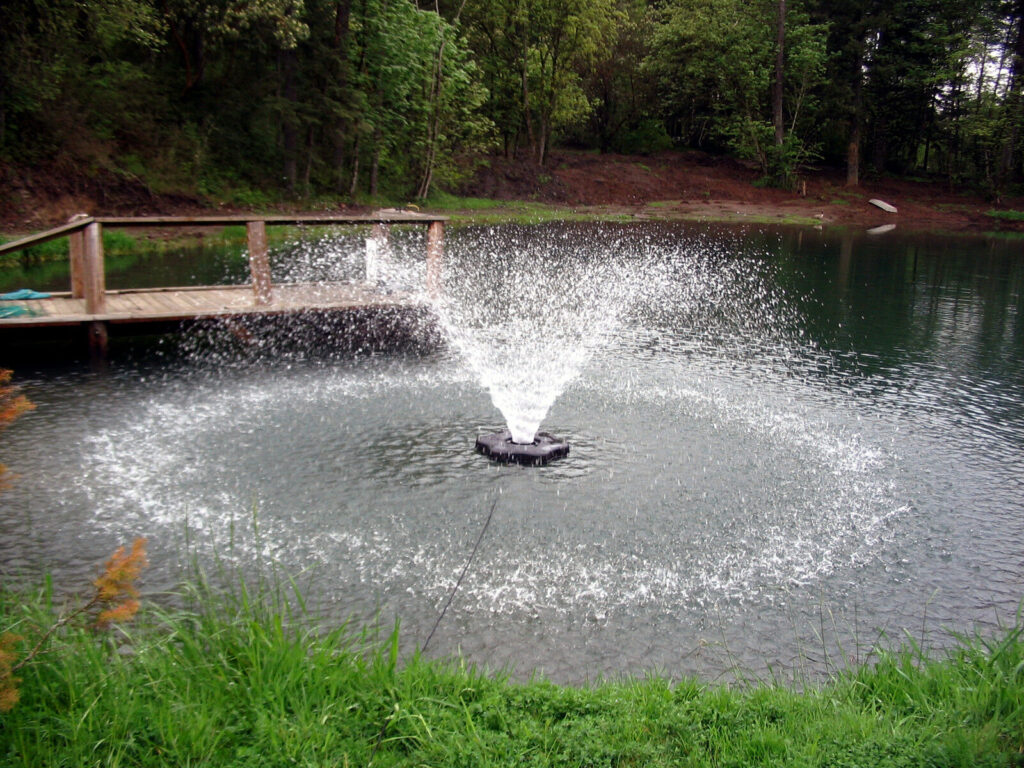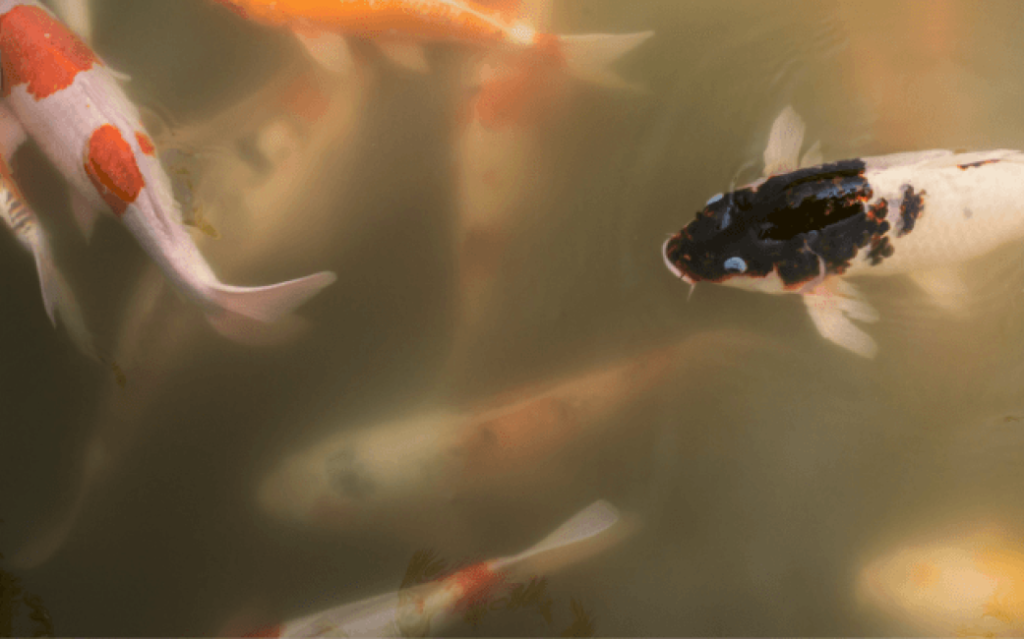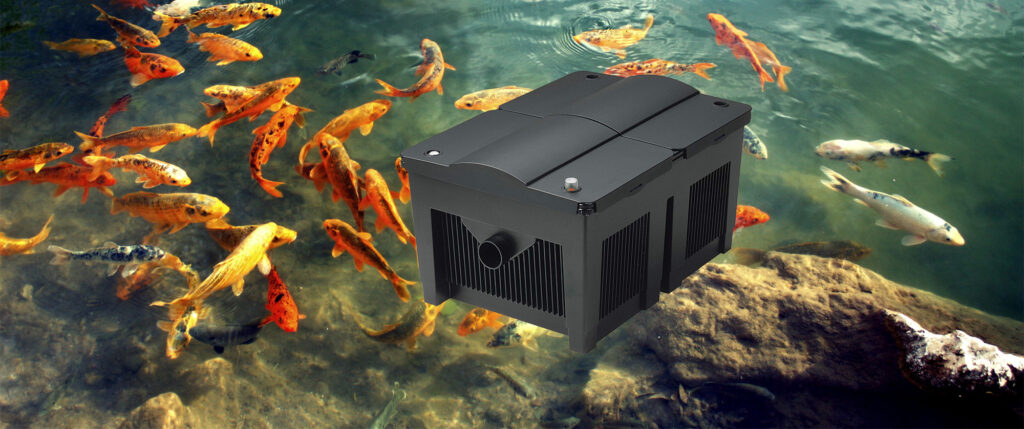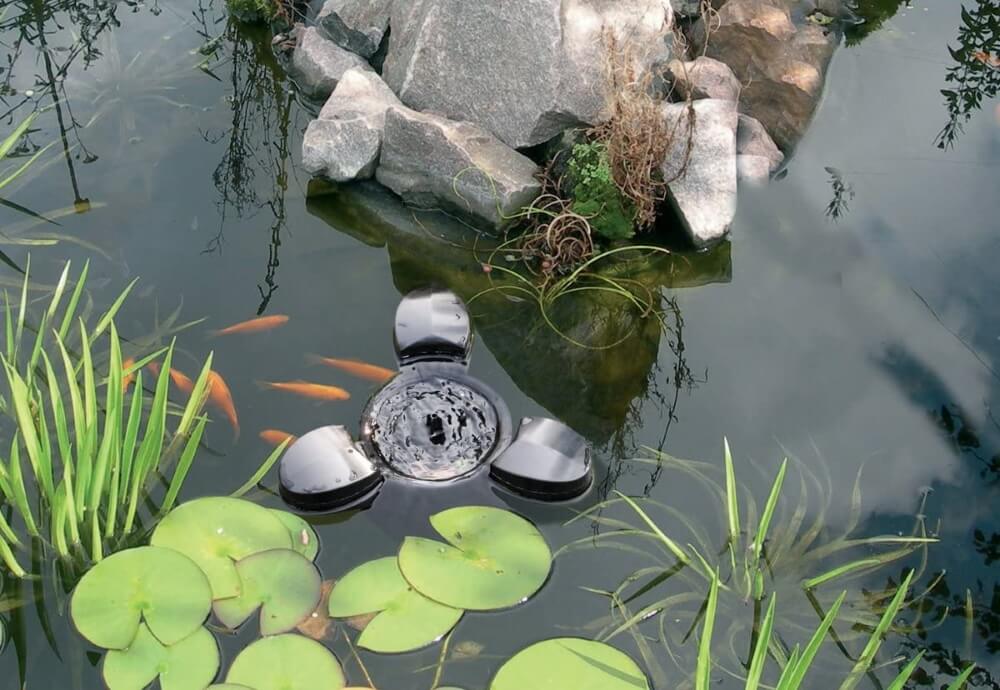
The sheer number of fish types that can be found in a fish pond is rather staggering. There are so many types you can find, ranging from the popular Goldfish, sturgeons, koi carps, to gold orfes, and much more. How can you choose the best pond fish? When making such a choice, there are several qualities that you should consider. Some fish dig the bottom, some eat plants, some due to their scales are nearly invisible, while others are colourful and add life to your pond. The good thing about fish is that you can bring so many types of fish together to make for a truly diverse pond. In this post, we will consider these several types of fish, their qualities, and more information that are important to be considered before introducing it to your pond. Read on to find out all these useful information!
There are numerous fish types that can be introduced to your pond and further you can read detailed information about the most popular species.
Koi fish are descendants of carp fish. They are a special type of fish bred by Japanese farmers who loved the bright, though admittedly odd patches of color on carp fish. The breeding and cultivation led to the different Koi that we have in many ponds today.
Most folks believe that Koi fish are small, but that is a misconception. Koi come in a wide variety of sizes, and some have been discovered to reach up to 3 feet in length. The young Loi can be grown inside fish tanks, but as soon as they get bigger, they need to be transferred to bigger ponds.
Koi fish have been found to weigh an average of 35 pounds, at least when older. Hence, it is important to have enough space for them in the pond. It is recommended that you have a ratio of 500 to 1000 gallon of water per Koi.
Feeding Koi is quite easy. They are omnivorous and will eat every other thing humans eat. However, they have their delicacies. These include cereals, shrimp, watermelon, and lettuce.
To ensure that Koi prosper in water, you should ensure that the water is very clean. Therefore, the pond requires regular maintenance, and you might have to install an outdoor filtration system.
Koi live for quite a long time when compared with other fish. Some have been found to live for up to 25 years before dying.
Another very popular species of fish that many love to find in ponds are Goldfish. They are hugely popular largely due to their small size. From research conducted, the largest species can reach up to 18 inches in length and weigh up to 10 pounds. On the other hand, the smallest species can reach a maximum of 7 inches.
This makes them much easier to manage because, for one, they can be left to live in aquariums for longer, and then transferred to smaller ponds if they are few. With their small size, an adult is recommended to be kept in at least 20 gallons of water, and this ratio should be used as per the number that you have.
On feeding, Goldfish are omnivorous, with a liking for aquatic plants, newts, frogs and insect larvae in the wild. Pet goldfish can be fed with pellet fish food, vegetables, and some live food every once in a while. Their ideal habitat is in calm, clean waters, although they do not mind some cloudiness. An important thing to note about them is that they prefer cooler waters and thus, you don’t need a heater so as to attain a tropical water temperature.
Mosquito fish are named that way because their main diet consists of mosquito larvae. However, they also feed on algae in their natural habitat and flake food when it comes to feeding.
Although native to eastern and southern US, this silvery fish has been spread all over the world because it is very helpful in mosquito control. Therefore, it is also very important to have a couple of them in your pond because the stagnant waters will definitely attract these insects. In terms of size, these fish are some of the smallest there is. Females can reach an overall length of 3 inches or less while males are much smaller, reaching up to 2 inches max lengthwise.
This means that they need a smaller volume of water per fish, and thus, they are the best fish for small ponds. The fish thrive in freshwater environments and can survive freezing temperatures as well as high temperatures of up to 100°F. This shows that they are easy to take care of because they can handle quite a lot.
One of the nicer-looking pond fish available on the market, you may often hear Golden Rudds referred to as “Rosette pond fish”.
These fish have a unique silver and gold body, growing all the way up to 14 inches if kept in large enough ponds. Their scales are silver/pink on their body, while their fins have a gold-red color on their back. These are naturally healthy fish, making it unlikely that they will fall ill under your care. However, Golden Rudds can be negatively affected by mold and carp louse.
If you want to keep these unique fish in your pond, you should ensure that it is at least 28 inches deep, allowing them to hibernate easily. Furthermore, you should have a shallow depth of around 8 inches for propagating. These fish enjoy clean water with a bit of a flow, thereby making a powerful pond filter a necessity.
Golden Rudds enjoy being in a school of around 10-15 fish, and while they enjoy eating insects; you can buy high-quality fish food. Golden rudds can live for up to 15-20 years, giving them one of the longest life expectancies of any pond fish.
Golden Orfe’s natural habitat is in fast-flowing rivers, which means that they require clean and highly oxygenated waters at all times. To achieve this in a pond, a powerful filtration system, as well as an air pump, might be necessary, especially during the hot weather, so as to run fountains and waterfalls for maximum levels of aeration.
With such requirements, Orfes are the best outdoor pond fish because they will force you to create a spectacular pond with fountains, waterfalls and the like, leaving you with a one of a kind water display.
However, this makes them very hard and expensive to take care of and thus, is not ideal when you are on a budget. In terms of size, these fish can grow to about 18 inches or more and should be kept in groups of 5 or more because of their social nature. Because of this, they require plenty of space, typically at least a 500-gallon pond. For food, you can give Orfe live insects, pond flakes and sticks as well as pellets.
Minnows are very peaceful fish that can live in the same pond as other community fish such as tetras, mollies, and plecos among many others. Having their origins in mountain stream environments, these fish require cool waters to thrive in, ideally in the range of 64 – 72°F. The water also needs to be very soft and have a neutral pH while the pond should be decorated with rocks, driftwood, and live plants.
For feeding, minnows can eat a variety of flakes and pellets as well as fresh and frozen foods, making them grow to about 4 inches in length and live for an average of 4 years. With their small size, minnows can practically live in aquariums their whole lives. Ponds can hold a big number of them, which can be very beneficial for controlling mosquitoes since the fish also feed on insect larvae.
Pumpkinseed fish, also known as Sunfish, are a common North American pond fish. These tall fish can grow up to 10 inches long and 6 inches tall, and weighing up to a pound.
Pumpkinseed fish are strong pond fish which are great for killing unwanted vermin like larvae and insects. However, bear in mind that you should not introduce more than one pumpkinseed fish to your pond, as they can quickly multiply.
These pond fish primarily feed on insects and parasites, helping to maintain the health of other pond fish; however, they may feed on fish eggs, which may be a good or bad thing depending on your situation.
You should ensure that your pond has deep and shallow areas of at least 28 inches and 8 inches, respectively.
Pumpkinseed fish can live up to 12 years.
Calicos are a breed of Goldfish that have very fancy colors, ranging from red to yellow, orange, grey, white and black. They are good pond fish to have because they are very hardy and are easy to keep. Out of all the goldfish breeds, calicos are the hardiest and will eat almost anything that is offered to them. Fresh, frozen and flake food should form a huge part of their diet, and just like Goldfish, some vegetables and fruits should be given every once in a while.
In terms of size, calicos can grow to reach a length of 13 – 18 inches and that size requires at least 15 gallons of water to grow in.
Oranda is also a breed of Goldfish that has a conspicuous brain-like growth on its head. At times this growth can become too big that it affects the fish’s vision. However, it can be easily trimmed using a pair of scissors, and this does not harm the fish because that part has no nerves. Size-wise, an adult can reach up to 10 inches in length on average and just like Goldfish, a single oranda requires about 20 gallons of water to thrive, which is very manageable.
When it comes to diet, Orandas pretty much feed on the same things as Goldfish, and when fed well, the females can lay up to 1000 eggs at a time. An important thing to note here is that these fish prefer the warmer 75 – 80°F water temperatures so as to live comfortably in the pond.
Many aquarium fish that come from temperate and subtropical climates will thrive and breed in outdoor fountains and ponds if certain conditions are met.
In order to stock fish in a pond, there are several factors that you must consider. We will discuss each of these factors below.
This means that when stocking the pond, you should ensure that there is a balance between the prey and predator fish. Failure to do this will result in imbalance in the number of fishes with predators overwhelming the prey. We recommend a ratio of 3 prey to 1 predator. This ratio will give the predator enough food to eat while ensuring that the prey can multiply and grow.
By keeping a good ratio, you will keep the population of fish in the pond in check.
You should choose the right time to stock your pond. From our findings, the best time to stock your pond is in springtime or fall. Why? Because at these times, the temperatures are just right to support high oxygenation in the water.
You need to allow your fish get used to the water in the pond before dumping them in. To do that, place the transportation bag in a shaded area of the pond for about 20 minutes so that the temperature of the water inside the bag can gradually increase or decrease to match that of the pond water. After this, pour out the fish into the pond.
Plants that grow underwater create a good habitat for the small fish to hide from predators while also providing a good environment for them to lay their eggs.
However, these might die, and thus, it is recommended to install some artificial objects such as fish attractor trees and logs. These will not decompose at all, giving the small fish a huge chance to grow in number.
It is very important to carry out regular maintenance so that your fish will remain healthy and won’t die out. Therefore, make sure that the pond water is clean and oxygenated. You can even introduce some good bacteria if you discover the toxicity is rising.
Regularly check the health of your fish, checking the color, size, weight, and similar factors.
There are so many fish types in nature, and the best pond fish are just like the other types of fish found in nature, including streams, still waters, or rivers. Hence, it is vital to create an environment similar to what they’d have in nature. You should ensure that the food you give them, the water conditions, as well as the ratio of fish, are carefully monitored for the good of your pond fish.
We hope that this article will guide you and help you to make the most of your pond.





